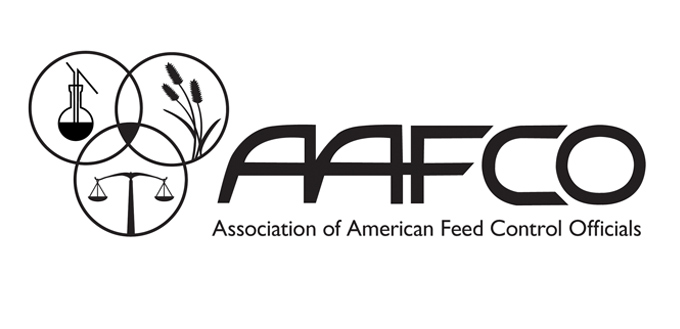Whenever we buy commercially available food for our pets, whether it is for dogs or cats, we are always taught to look for the AAFCO statement on the label of the pet food product that we’re buying. That is why we always see pet foods that come with nutritional adequacy statements for growth, adult maintenance, reproduction, supplemental, intermittent, or any combination of these. We know the importance of getting the right food for our pets, but why are these ‘statements’ from AAFCO so important? What is AAFCO anyway? And if a pet food doesn’t have any AAFCO statement, does it mean it’s not a reliable product? These are just some of the questions we are pretty sure you’re thinking about right now. And this is what we’re intent on addressing in this article.

The Association of American Feed Control Officials
If you’re thinking that the AAFCO or Association of American Feed Control Officials is responsible for regulating the production and correct labeling of pet food products, you’d be mistaken. That would be the responsibility of the US Food and Drug Administration. However, it is important to note that the US FDA is a member of the AAFCO alongside the US Department of Agriculture and other federal, state, and local agencies that have the legal mandate to regulate and oversee the sale and distribution of veterinary nutrition and drug remedies.
It should be noted, however, that the AAFCO is not a regulatory body although it is composed largely of representatives from various regulatory agencies across local, state, and federal lines. In fact, also included in the organization are representatives from veterinary food ingredient suppliers and feed manufacturers such as Cargill Animal Nutrition, Hill’s Pet Nutrition, Nestle Purina, and Nutro Products, among others.
As such, the AAFCO is a collaboration among various stakeholders, both from the government and the private sector. It is a voluntary organization and one that is motivated by the need to ensure animal safety and consumer protection.
Unfortunately, with the inclusion of big-name animal feed brands in the group, one cannot shake this funny feeling a brand will try to have a say in the establishment of certain guidelines that will greatly impact its position in the thriving animal feed industry.
But that’s just a hunch.
The AAFCO, being a voluntary organization, doesn’t have any legal powers to enforce the so-called ‘rules’ that they create. These are merely guidelines that everyone else who wants to become a player in the thriving animal feed industry is expected to adhere to.
Nevertheless, the majority of states in the country have adopted these guidelines set by the AAFCO, thus, providing teeth to such ‘rules’. Since these guidelines are now adopted and implemented by various local and state agencies that have the mandate to enforce such rules, then everyone in the animal feed industry is expected to comply.
What Does the AAFCO Do?
While it is true that the AAFCO doesn’t have the legal mandate to enforce its guidelines, the state and local agencies that adopt these guidelines do. As such, it would be wise to adhere to these guidelines if you live in an area that follows the recommendations of the AAFCO. But what does this organization really do?
Establish Guidelines for the Labeling of Animal Food Products
The AAFCO provides very specific guidelines on how labels should be made. These are generally classified into three categories including required labeling, prohibited labeling, and optional labeling.
When it comes to required labeling, any animal feed product should show on the label the following information.
- Brand and product name. If it’s unbranded, then there should be a unique identifier.
- The species of animal that the food is intended for. If it’s for a dog, then it should be placed on the label.
- Quantity or amount of the food product in each package or container. This should be both in metric and English units of measurement.
- The guaranteed analysis lists the amount of only certain nutrients found in the food product.
- Ingredient statement. The ingredients in the food product should be listed in descending order by virtue of their weight.
- Statement on nutritional adequacy including the type of pet the formulation is intended for as well as the life stage. Treats, supplements, and snacks are not required to have this information on their labels.
- Directions for feeding the product to pets especially if the food product is labeled as complete and balanced.
- Complete name and address of the manufacturer or distributor or both.
Obviously, these are applicable only to commercially available pet foods such as dry dog food, wet dog food, and semi-moist dog food. Dog treats and snacks including dog supplements and their cat variants are also included. When it comes to raw dog food or even homemade or cooked dog food, then such guidelines will never be applicable. Of course, if someone will be making such dog food or cat food items to be made available in the market for general consumption, then they will have to adhere to these rules as well.
We’d like you to focus your attention on one of the fundamental aims of the AAFCO which is setting the standards for nutritional adequacy.
AAFCO considers the minimum and maximum levels of nutrients that the organization deems essential to the health of pets. Generally, AAFCO recognizes the minimum level of nutrients as being “adequate” to meet the needs of pets. For example, AAFCO places the minimum protein content of adult dog food at 18 percent. In other words, if the dry dog food or wet dog food contains less than 18 percent, then it is deemed not ‘adequate’.
But then, if you look at the guaranteed analysis of pet food, what is generally printed is information as a “per-fed” basis and not as a “dry matter” basis. The minimum 18% set by the AAFCO pertains to the dry matter content of the dog food and not on its per-fed basis. As such, you will have to do a little math. You’ll need to subtract the published moisture content from 100% to get the percentage of dry matter and then divide the published protein content by the dry matter content.
For example, if the dog food has a moisture content of 10%, then the dry matter content is 90%. Suppose it also has a published protein content of 20%, then you need to divide this by 90% to get 22.22%. This is the actual protein content of the dog food on a dry matter basis and not the 18% on a per-fed basis.
Unfortunately, AAFCO doesn’t really regulate the source of nutrients. As such, the protein content can come from almost anything. It doesn’t matter if it comes from fresh animals or roadkill. It doesn’t care if it comes from game, fowl, poultry, or even plants. As long as there is ‘protein’, it should suffice.
We have always been advocates of using only animal proteins since it reflects the original diet of our dogs’ ancestors. But given the fact that some of the members of AAFCO come from big-name pet food brands, we cannot help but think that they are trying to manipulate these rules to favor their use of plant-based proteins in lieu of animal-based proteins. After all, plant proteins are way cheaper than animal proteins.
There are also some nutrients or substances that AAFCO has left to the discretion of pet food manufacturers. For instance, the ideal ratio for Omega-6 to Omega-3 fatty acids should be 1:1 or at least 4:1, yet pet food manufacturers can put it at 8:1 or even 12:1. The same is true with glucosamine, chondroitin, and MSM. AAFCO doesn’t put guidelines on these substances despite clinical evidence showing the obvious benefits of such substances to dogs.
While AAFCO provides guidelines on how pet food products should be labeled, there are still some areas that are generally ‘grey’, so to speak.
Define Animal Feed Ingredients
We mentioned in the preceding section that all pet food products like dry dog food and wet dog food should list their ingredients in descending order of weight. This is one of the fundamental functions of the AAFCO.
It is important to distinguish the ingredients listed on the guaranteed analysis and on the ingredient list. Only those listed on the guaranteed analysis are expected to have their specific quantities to be published. On the ingredient list, it is already assumed that as you read through the litany of ingredients, you know that the last of these ingredients will have the least amount in terms of weight.
Unfortunately, this is where some controversies lie. Some pet food manufacturers will try to deceive consumers by splitting an ingredient into different types of the same ingredient. For example, corn is an ingredient that can be typically found in many big-name commercially available dry dog foods. However, this ingredient is not only listed as ‘corn’ per se. You may find other corn products like corn germ meal, corn bran, corn syrup, corn gluten, and even corn gluten meal throughout the ingredient list. Manufacturers try to split the corn ingredient into several formulations so that consumers will not think that their pet food product is essentially just that – made of corn.
There’s also the issue of proteins. Ideally, you should always look for a named or clearly identifiable animal protein. For instance, instead of picking a wet dog food that contains ‘poultry meal’ you’ll be better off with a ‘chicken meal’. Why? Do you know how many types of poultry animals are there? Do you also know which of these ‘poultry’ animals are included in the dog food? When you get dog food that reads ‘chicken meal’, you’ll know that it contains chicken.
Another point is the type of animal protein used in the formulation of dry dog food, wet dog food, or even semi-moist dog food. There are those that use byproducts which include clean non-rendered animal parts like lungs, brain, bone, intestines, kidneys, spleen, and the like. Then there are those that use ‘meals’ which are cooked or rendered animal tissues except blood, hoof, hide, stomach, and hair, among others. And then there are byproduct meals which are cooked or rendered by-products. There are also those that use animal digest designed specifically to impart ‘flavor’.

Provides Guidelines for the Conduct of Feeding Trials
Pet food manufacturers who wish to introduce a new brand of dog food in the market will have to show that their new product is indeed nutritionally complete. As such, they are required to conduct feeding trials so that they can support their claim.
Ideally, 8 healthy dogs should be included in the feeding trial. This is the minimum requirement. Additionally, the trial should last at least 26 weeks and only the dog food product being tested should be given to the dogs; nothing else, except water, of course. The trials can only be executed in a test kennel or testing facility. All measures should also be documented, including the dog’s vital signs and key laboratory indicators like hemoglobin levels, the volume of packed red blood cells, serum albumin, and liver enzymes.
How will the dog food product pass? If all the tested parameters fall within their normal ranges and six dogs were able to survive for at least 6 months subsisting only on the new food product, then the product is labeled as nutritionally complete.
Do understand, however, that feeding trials are very rare for the mere fact that they are expensive and there are some ethical issues that need to be addressed. As such, AAFCO devised a ruling that allows manufacturers of pet food to label their new products as nutritionally complete if it meets the nutritional requirements of the AAFCO nutrient profile for dogs or if the product is similar to an existing pet food that also meets those nutrient requirements.
Given the fact that there are big-name pet food manufacturers included in the organization of the AAFCO, one cannot help but wonder if these recommendations are indeed for the betterment of the pets and livestock of consumers.
Should you trust the AAFCO? It’s always a good place to start. But, as you go on your journey to becoming an amazing pet parent, you will realize that not everything the AAFCO ‘recommends’ is for the benefit of your pet. After all, there are big-name corporations in the organization that have a large influence on how regulations can be established and enforced.
Sources:
- Welcome to AAFCO, AAFCO





Coming from a consumer who is also an advisor to AAFCO, I can tell you that big business does not influence the decisions that the federal and state regulators make. The health and safety of animals is our number one priority. Everyone there, myself included, are not paid for our work at AAFCO – we volunteer. We do it because we love animals. And big business does not have a vote – only regulators do. That said, anyone, including you, is welcome to attend an AAFCO conference just like the pet food companies do. But, just because thpet food companies attend AAFCO it does not make them “members.”